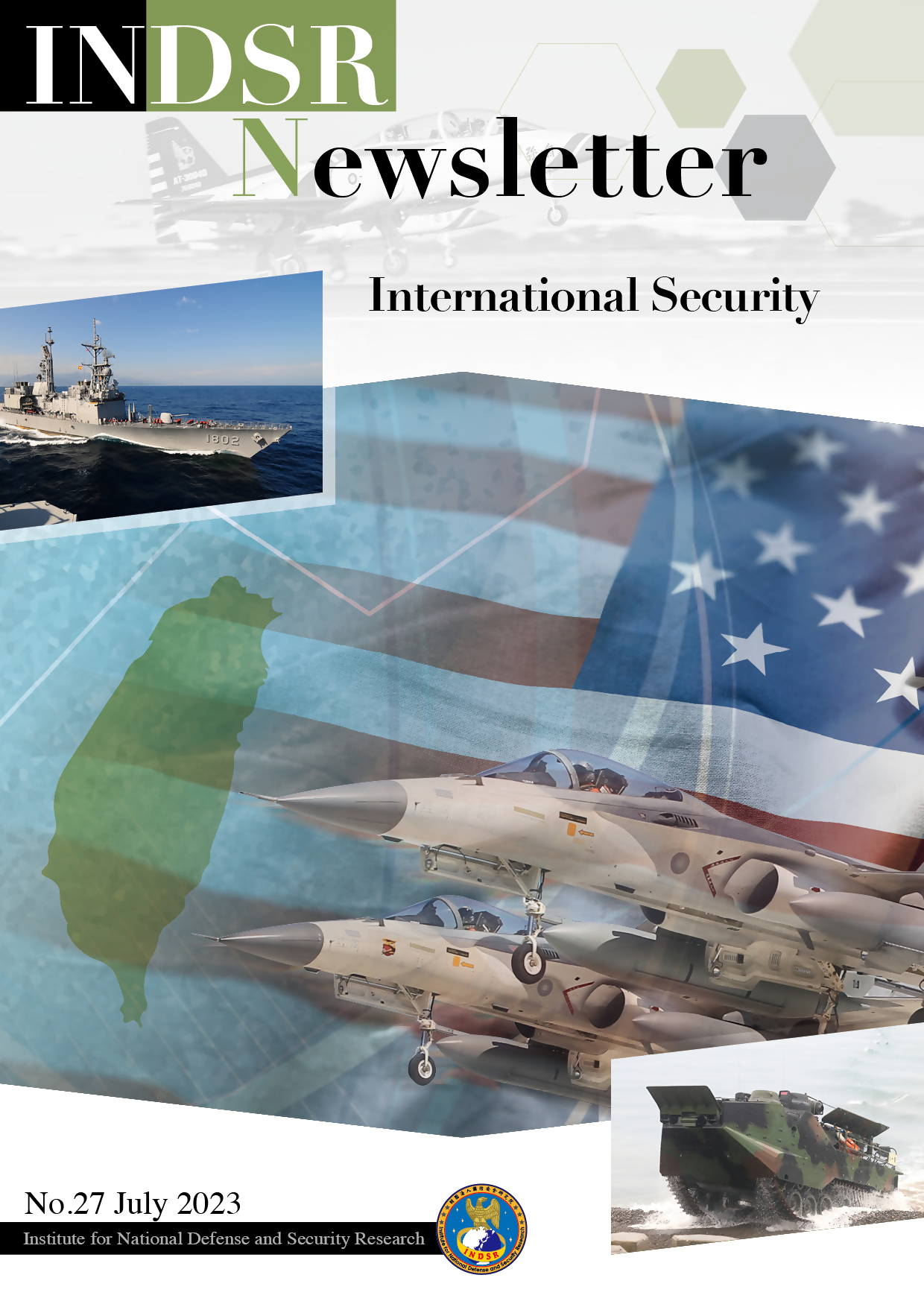How to Avoid Wars? US Military Needs to Form New Norms across the Taiwan Strait
2023.08.11
Views
1159
PDF link:
After eight PLA J-10 fighter jets crossed the median line of the Taiwan Strait on June 22 and 23, which was the first time for the PLAAF that flew over the outer boundary of Taiwan’s contiguous zone, Russian warships intentionally approached the contiguous zone in waters off eastern Taiwanon 27 June. On the one hand, this is an evidence of the “Sino-Russian coordination” with outbreak of Russia’s invasion of Ukraine; on the other hand, it is a reaction to the overall defense escalation along the First Island Chain. Russian warships deliberately traveled from south to north via the outer line of the island chain instead of its inner line, passing through the Philippine Sea and the waters off Taiwan’s eastern coast before disturbing the surrounding waters of Japan. This was to create a joint encirclement with the PLA in an attempt to constrict Taiwan military's response in the event of a Chinese invasion.
China’s Gray Zone Tactics aimed at changing status quo
In June of last year, when China denied that the Taiwan Strait is an international waterway, the author strongly argued that this move was a “long-term fine-tuning approach” of Beijing to alter the status quo in the Taiwan Strait. This is China’s deliberate intention to extend the military power of the PLA beyond the first island chain in order to normalize its activities in the waters off the east coast of Taiwan. This can be seen as a strategy that serves multiple purposes. Under that mentality, China published the map ofNine-Dash Lines in 2009 and it included a dash line that was located in the southeastern waters of Taiwan; in 2014, a map of “Ten-Dash Lines was be released that further expanded to include the eastern waters of Taiwan. Based on this declaration, the PLA Navy (PLAN) challenged the median line of the Taiwan Strait in 2014 and began conducting circumnavigation cruises around Taiwan starting in 2016. They often approach the western boundary of Taiwan’s Air Defense Identification Zone (ADIZ) or cut into the northern corner of the ADIZ to neutralize the median line of Taiwan Strait. From 2020 to the end of 2021, China has been actively smearing Taiwan’s ADIZ by employing tactics such as “approach and penetrate” and then repeatedly entering Taiwan’s southwest and southeast airspace with enlarged formations and strength in an attempt to establish an “ADIZ-less” normality. Since 2022, the PLA has adopted military exercises and provocations as a means to alter the naval power dynamics in the Taiwan Strait to push PLA activities beyond the inner boundary of Taiwan’s southwestern ADIZ and the outer boundaries of Taiwan and its affiliated islands’ contiguous zones. With the tricks mentioned earlier, it’s only a matter of time before the PLA breaks through Taiwan’s contiguous zone boundaries. Since the PLA continuously set constrict Taiwan military’s response with high-frequency activities, the status quo in the Taiwan Strait has been changed from time to time.
The eastern coast is facing risks similar to the western coast
The contiguous zone refers to the maritime area adjacent to the outer side of the territorial sea of a coastal country, up to a distance of 24 nautical miles from the baseline of the territorial sea. According to the “Law of the Republic of China on Territorial Sea and Contiguous Zone”, Navy and Coast Guard personnel have the authority to pursue, board, inspect, detain, and arrest individuals or objects within the territorial sea or contiguous zone if one is believed to violate relevant laws and regulations of the Republic of China. However, compared to the ADIZ, the contiguous zone is already closely attached to Taiwan and its affiliated islands. If the boundary of the territorial sea and airspace are considered Taiwan’s “last defense lines”, the PLA activities near the contiguous zone not only disrupt the status quo in the Taiwan Strait but also create a sense of siege. Since the contiguous zone of eastern Taiwan’s offshore is different from that of the western counterpart, which is defined by territorial base points such as Penghu’s Wengong Rock and Qimei Island, therefore, compared to the western offshore of Taiwan, the eastern offshore lacks defense depth. In the future, the risks faced by Taiwan’s eastern coast will be no less than the western coast. On 18 June, it was reported that a Chinese submarine was spotted in the contiguous zone of Amami-Oshima island of Japan, to the northeast of Taiwan.
US military needs to form new norms across the Taiwan Strait
Since the section of China’s contiguous zone between 24 North latitude and 26 North latitude is located on the eastern side of Taiwan Strait’s median line, normally only the Taiwan military entered China’s contiguous zone by patrolling the Strait median line before the military power between both sides became severely imbalanced. The status quo in the Taiwan Strait is constantly changed as Chinese military forces continue to expand eastward. The PLA’s activities in the airspace and waters surrounding Taiwan would no longer be deterred by regular U.S. patrols, American arms sales to Taiwan and enhanced defense cooperations with Japan and the Philippines; however, it has become apparent that without effective military and diplomatic action from the US to push back against the PLA in Taiwan’s ADIZ and the eastern side of the Taiwan Strait’s median line, Taiwan’s Navy and Air Force may find their maneuverability increasingly restricted. Ultimately, this may lead to Taiwan exercising its right to defend itself. In other words, to avoid war, China must be restrained from repeatedly changing the status quo in the Taiwan Strait; and to prevent the Strait from undergoing further changes by China, the US must increase its naval and air presense around the Taiwan and establish a “new normal” sufficient to deter Chinese military activities in terms of the balance of military powers.
(Originally published in the “National Defense and Security Real - time Assessment”, June 30, 2023, by the Institute for National Defense and Security Research.)
(The contents and views in the assessments are the personal opinions of the author, and do not represent the position of the Institute for National Defense and Security Research.)


